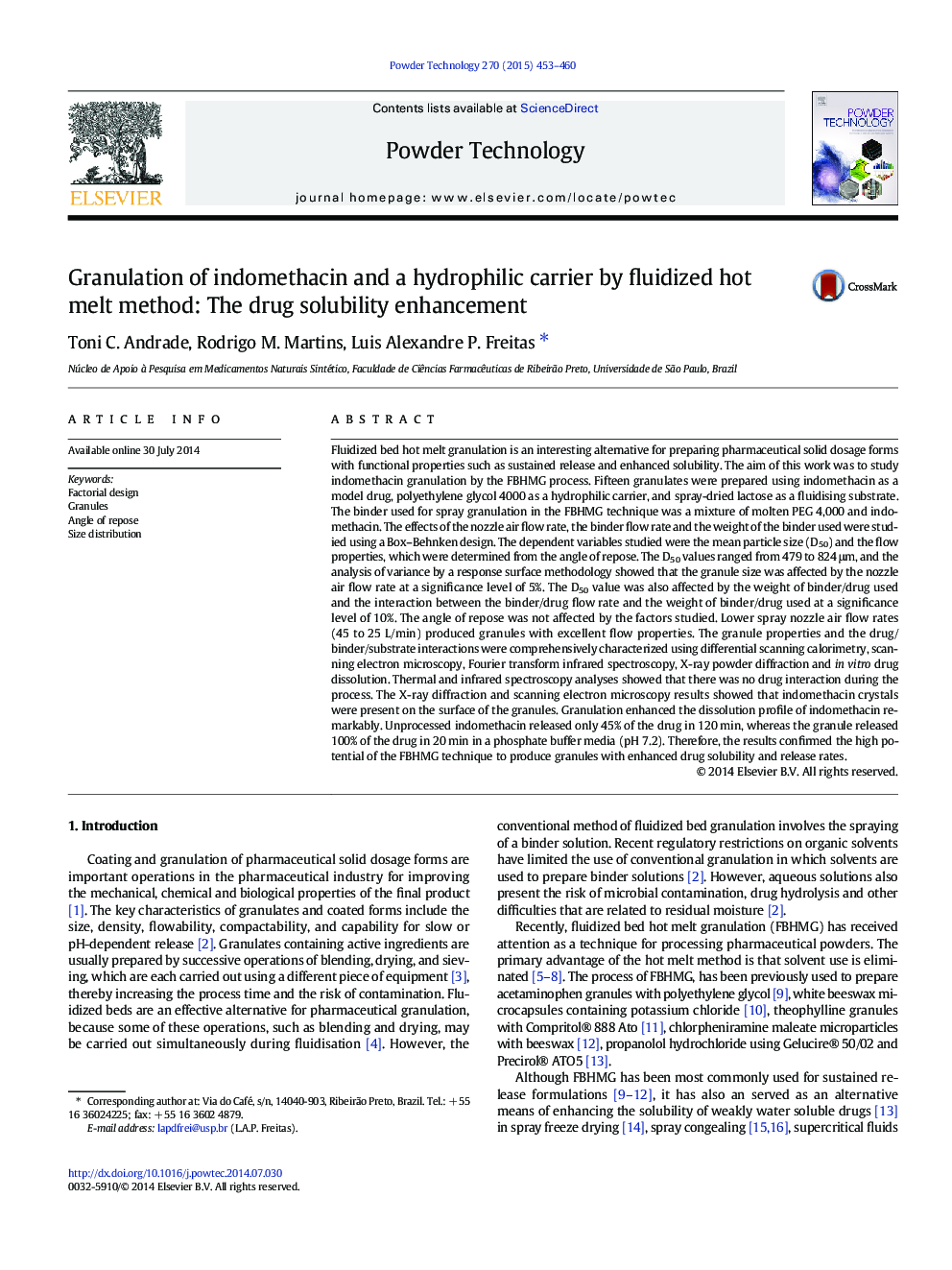| Article ID | Journal | Published Year | Pages | File Type |
|---|---|---|---|---|
| 235906 | Powder Technology | 2015 | 8 Pages |
•Studies on fluid bed hot melt granulation, FBHMG, of pharmaceuticals are needed.•The granules' mechanical and solid state properties were characterized.•Response surface analysis was applied to study process effect on granules.•FBHMG suitability to enhance drug solubility was demonstrated.
Fluidized bed hot melt granulation is an interesting alternative for preparing pharmaceutical solid dosage forms with functional properties such as sustained release and enhanced solubility. The aim of this work was to study indomethacin granulation by the FBHMG process. Fifteen granulates were prepared using indomethacin as a model drug, polyethylene glycol 4000 as a hydrophilic carrier, and spray-dried lactose as a fluidising substrate. The binder used for spray granulation in the FBHMG technique was a mixture of molten PEG 4,000 and indomethacin. The effects of the nozzle air flow rate, the binder flow rate and the weight of the binder used were studied using a Box–Behnken design. The dependent variables studied were the mean particle size (D50) and the flow properties, which were determined from the angle of repose. The D50 values ranged from 479 to 824 μm, and the analysis of variance by a response surface methodology showed that the granule size was affected by the nozzle air flow rate at a significance level of 5%. The D50 value was also affected by the weight of binder/drug used and the interaction between the binder/drug flow rate and the weight of binder/drug used at a significance level of 10%. The angle of repose was not affected by the factors studied. Lower spray nozzle air flow rates (45 to 25 L/min) produced granules with excellent flow properties. The granule properties and the drug/binder/substrate interactions were comprehensively characterized using differential scanning calorimetry, scanning electron microscopy, Fourier transform infrared spectroscopy, X-ray powder diffraction and in vitro drug dissolution. Thermal and infrared spectroscopy analyses showed that there was no drug interaction during the process. The X-ray diffraction and scanning electron microscopy results showed that indomethacin crystals were present on the surface of the granules. Granulation enhanced the dissolution profile of indomethacin remarkably. Unprocessed indomethacin released only 45% of the drug in 120 min, whereas the granule released 100% of the drug in 20 min in a phosphate buffer media (pH 7.2). Therefore, the results confirmed the high potential of the FBHMG technique to produce granules with enhanced drug solubility and release rates.
Graphical abstractFigure optionsDownload full-size imageDownload as PowerPoint slide
